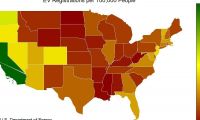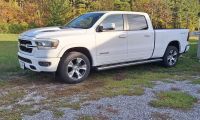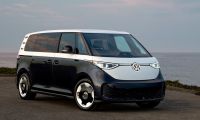Tesla’s Q1 2025 earnings call is upon us, and investors have already submitted their questions for the Tesla executive team.
These questions are compiled by Say.com, a platform that allows verified investors to submit their queries.
A share-based voting system then ranks these questions according to their popularity.
Retail and institutional investors raised important questions, including requests for clarification on the sudden decline in Tesla orders this quarter and whether this is linked to reports of damage to the Tesla brand caused by Elon Musk.
There are also questions regarding the start of production of new, cheaper models and the impact of tariffs on the company.
These are all interesting points that Tesla investors raise; however, the primary concern for Tesla shareholders this quarter is regarding robotaxis.
Out of the top 10 questions voted on by Tesla investors, half were related to the rollout of the full self-driving software, the robotaxi program, and the Cyber Cab.
These questions are…
- What are the highest risk items on the critical path to robotaxi launch and scaling?
- When will FSD unsupervised be available for personal use on personally owned cars?
- Does Tesla see robotaxi as a winner-take-most market, and as you approach the Austin [June 2025 robotaxi service] launch, how do you expect to compare against Waymo’s offering, especially regarding pricing, geofencing, and regulatory flexibility?
- Can you please provide an update on the unboxed [production method for the Cyber Cab] and how that is progressing?
- Robotaxi still on track for this year?
Together, millions of Tesla shares have cast votes on these issues, reflecting a shift in Tesla investors' interests from electric vehicle sales to full self-driving and robotaxi services.
Having said that, some Tesla investors are also interested in the car business, and one of the questions raised is how Elon Musk’s involvement in politics affects Tesla sales.
A Tesla investor inquires whether the reports of brand damage caused by Elon Musk are accurate and if Tesla has experienced an unusual decline in orders.
The Tesla investor asks…
Did Tesla experience any meaningful changes in order inflow rate in Q1 relating to all of the rumors of “brand damage”?
Tesla has already released Q1 2025 sales data, revealing that sales have significantly decreased compared to Q1 2024 levels, which were already lower than Q1 2023 levels.
These numbers have divided the Tesla investor community, with some calling for Elon Musk to step down as CEO while others remain supportive of his leadership. Elon Musk has responded to calls for him to step down as Tesla CEO.
Two consecutive years of sales and profit decline are already bad enough for any company; however, this is even more concerning for a company like Tesla, which is considered a high-growth company.
For those of us who have been following Tesla for some time, we remember the EV maker's goal to increase vehicle production by 50% every year, ultimately selling more than 10 million vehicles per year by 2030.
However, given the current trajectory of vehicle sales, Tesla is far behind this goal, and the 10 million vehicles per year and 50% annual vehicle sales growth targets have quietly been replaced by dreams of robotaxis.
Another question Tesla investors posed to the Tesla executive team concerns how the ongoing tariffs will affect Tesla, especially given Elon Musk's prominent role in President Trump's government and the risk of other countries targeting Tesla as a negotiation tactic.
The investor asks…
“How is Tesla positioning itself to flexibly adapt to global economic risks in the form of tariffs, political biases, etc.?”
Given that Tesla manufactures all the vehicles it sells in the US domestically, some Tesla investors celebrated, thinking the tariffs would harm Tesla’s competitors while leaving Tesla unscathed.
However, Elon Musk has stated that the tariffs will not uniquely benefit Tesla, noting that “the tariff effect on Tesla is still significant.”
What’s likely at issue here is that although Tesla has the most American-made vehicles, the EV maker still uses Chinese-made lithium-iron-phosphate batteries to power its utility-scale battery storage devices.
Given the decline in vehicle deliveries, energy storage is Tesla’s most profitable business, and it seems that the tariffs will significantly impact Tesla’s golden goose.
Following in this theme, another issue Tesla investors wanted to inquire about is battery production.
Tesla investors ask…
“Does Tesla still have a battery supply constraint (noted on Q4 Earnings call), and how does this change with tariffs?”
This is a valid question, as battery cell availability was a key constraint on Tesla’s growth for a significant period. However, it now appears that demand has become the primary limiting factor.
For example, for the Cybertruck, Tesla has already announced that the company is producing enough 4680 cells to power 130,000 Cybertrucks per year.
However, demand seems to have reached a ceiling around the 50,000 Cybertrucks per year number.
While we are on the topic of the Cybertruck, another surprising thing I found was that there were no questions from either Tesla retail or institutional investors regarding the all-electric truck.
The Cybertruck, with over 1 million reservations and marking Tesla’s first venture into the lucrative pickup truck market, there was a lot of hope that the all-electric truck would be a significant success for Tesla.
However, now with demand stabilizing around 50,000 Cybertrucks per year, Tesla investors appear to be moving on from the Cybertruck dream.
Finally, another point Tesla investors wanted clarification on is the launch of new, cheaper vehicle models this year.
For the past year, Tesla has been teasing new and more affordable models that are set to start production in the middle of 2025.
Tesla announced that it will manufacture the new vehicles using its current production lines. This strategy is designed to expedite the vehicle's market introduction and effectively leverage Tesla’s existing production capacity of three million vehicles annually.
The promise of new vehicle launches in the first half of 2025 had excited Tesla investors; however, now that Tesla has released the “new” bare-bones Cybertruck Long Range to considerable criticism, there are fears that the promised new, cheaper models are merely the same vehicles as Tesla’s current lineup but with stripped-down features.
Tesla investors ask…
“Is Tesla still on track for releasing 'more affordable models' this year? Or will you be focusing on simplified versions to enhance affordability, similar to the rear-wheel-drive Cybertruck?”
Overall, this earnings call is shaping up to be one of Tesla’s most consequential earnings calls in some time. The EV maker has already revealed that vehicle deliveries are significantly down, and now the question is how much this has impacted Tesla’s financials.
There is even fear among a few Tesla investors that the EV Maker might post a quarterly loss after so many years. Please let me know what you think in the comments. Share your ideas by clicking the RED “Add new comment” button below. Also, be sure to visit our site, torquenews.com/Tesla, regularly for the latest updates.
Image: Courtesy of Tesla, Inc.
For more information, check out: Elon Musk Responds to Accusations Tesla Speeds Up Odometers to Avoid Warranty Repairs
Tinsae Aregay has been following Tesla and the evolution of the EV space daily for several years. He covers everything about Tesla, from the cars to Elon Musk, the energy business, and autonomy. Follow Tinsae on Twitter at @TinsaeAregay for daily Tesla news.












Comments
In all likelihood, the silly…
Permalink
In all likelihood, the silly cybertruck will not be produced after 2026. But that's just common sense, of course.